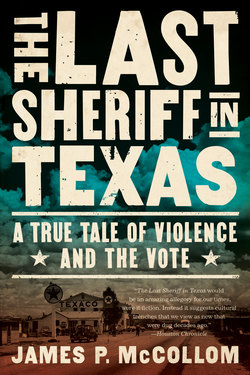Читать книгу The Last Sheriff in Texas - James P. McCollom - Страница 6
На сайте Литреса книга снята с продажи.
ОглавлениеAuthor’s Note
Much of the background of this book—landmarks, weather, customs—is memoir, based on my childhood in Beeville, a time when Sheriff Vail Ennis was a controversial figure among adults and a hero figure—a fearsome one—for adolescents.
The book’s main narrative is based on conversations with people who were adults at the time. I met Johnny Barnhart only after I returned to Texas soon after 2000. He contacted me and said he wanted to talk about the 1952 campaign. He later introduced me to Adam Gonzales, Andy Salazar Gonzales, and Elias Chapa. I got to know L. D. (Laurie) Hunter, Vail’s close friend and hunting partner, who became a principal source of insights into the sheriff’s character. The tape of Houston Pruett’s account of the Pettus shooting was an unexpected gift, much appreciated, from John Brockman, former president of Coastal Bend College. Glenn Krueger, Dickie Rudeloff, Wendell Baker, Fred Chesnutt, and others had invaluable insights, all helping to sort a true story from the many legends about the county’s hell-bent sheriff. I am grateful to all of them. Much of the material on Camp Ezell is also memoir. He was my first editor: When I was fifteen, I got a job writing sports for the Bee-Picayune. I loved Camp, and I loved his style.
As to style, there could be no greater difference than the ways of Vail Ennis and those of the county’s sheriff between 1924 and 1932. Sheriff John Eugene McCollom kept the peace during the angst-filled period of Prohibition and the KKK while—it was said—never firing his gun. I regret that I didn’t interview my grandfather for this book, but he died long before I had questions.
